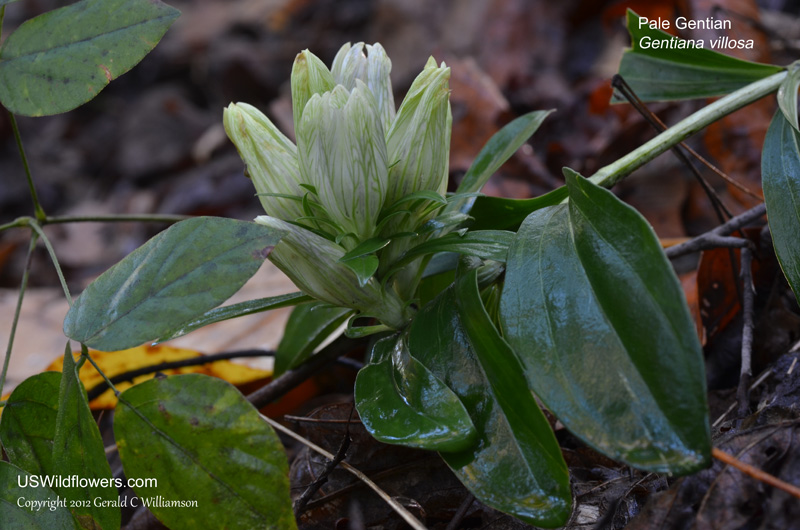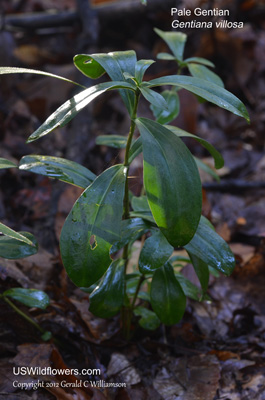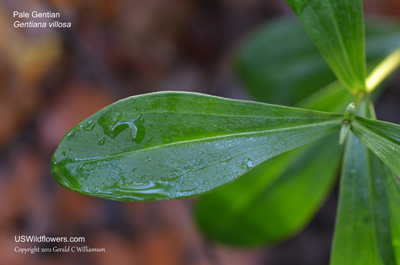Pale Gentian, Striped Gentian, Sampsons Snakeroot - Gentiana villosa
|
Gentiana villosa - Pale Gentian, Striped Gentian, Sampsons Snakeroot. Although at least one Gentiana species is found in every state in the United States (as well as most of Canada), Gentian villosa is found only in the southeastern quadrant of the country, as far north as Indiana, Ohio New York and New Jersey. It is Endangered in Indiana, Maryland, Ohio, and Pennsylvania.
Pale Gentian, also known as Striped Gentian, is a plant of forests and open woods, and as with many Gentians, blooms from late August into November.
Found in:
AL, DC, DE, FL, GA, IN, KY, LA, MD, MS, NC, NJ, OH, PA, SC, TN, VA, WV
Leave comments on Gentiana villosa at this link. | 
Distribution of Gentiana villosa in the United States and Canada:

Map courtesy of The Biota of North America Program.
Map color key
Search Our Database: Enter any portion of the Scientific, Common Name, or both.
Do a general Google search of the entire site:
#ad
 Follow USWildflowers on Twitter
| | Site: Walker County, GA Date: 2012-October-15 | Photographer: Gerald C. Williamson
Nikon D7000
Tamron SP 90MM f/2.8 AF Macro | | The white corolla with green striping is the predominant coloring for the Pale Gentian blossom, but, while this example only shows the slightest of purple lines, it can have much more purple than this. The white can vary to yellowish, more frequently as the blossom ages. The flowers are clustered at the top of the plant. Some Gentian blossoms do not open, but those of Gentian villosa will usually open partially. | | 
| | Site: Walker County, GA Date: 2012-October-15 | Photographer: Gerald C Williamson
Nikon D7000 | | Gentiana villosa can grow to nearly two feet tall. The leaves are opposite. The origin of the species epithet "villosa" is a mystery to me since the plant is not hairy. | | Click on the photo for a larger image

| | Site: Walker County, GA Date: 2012-October-15 | Photographer: Gerald C Williamson
Nikon D7000 | | The leaves of Gentiana are spatulate to obovate - both of these terms indicate that the widest part of the leaf is toward the tip rather than toward the stem; this is an important species indicator. They are dark green, 2 to 4 inches long, and sessile, although since it narrows at the stem at a glance it can almost appear to have a petiole, especially in the lower leaves. | | Click on the photo for a larger image

|
References used for identification and information:
|
|
| |
| #ad
|
|





